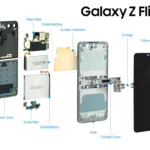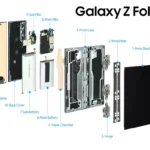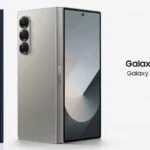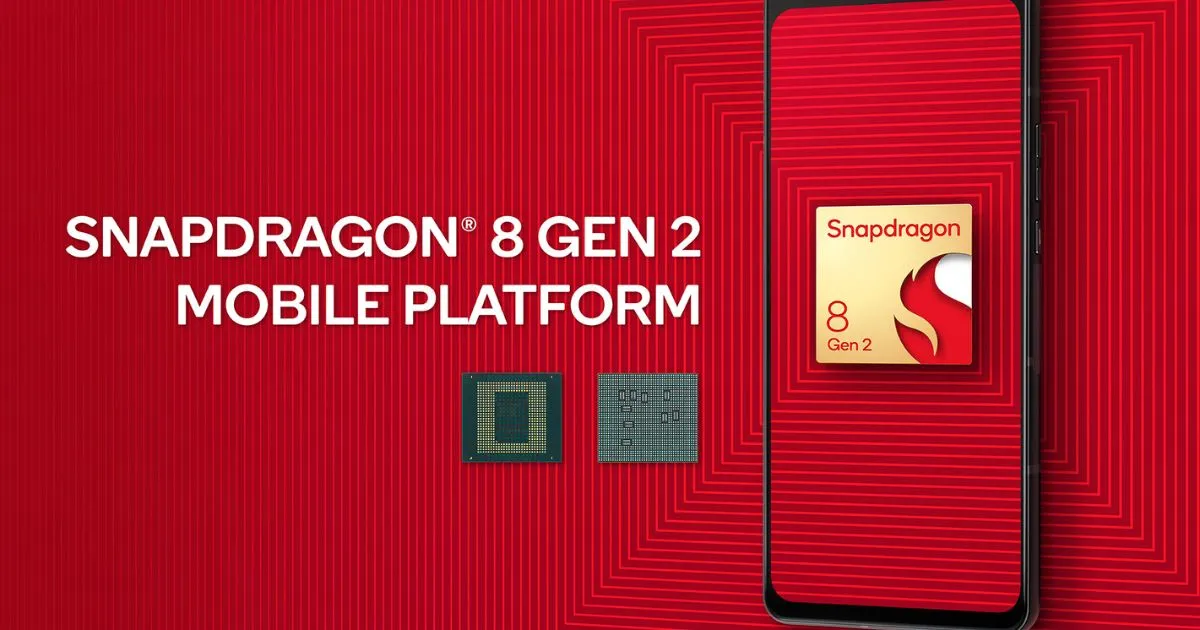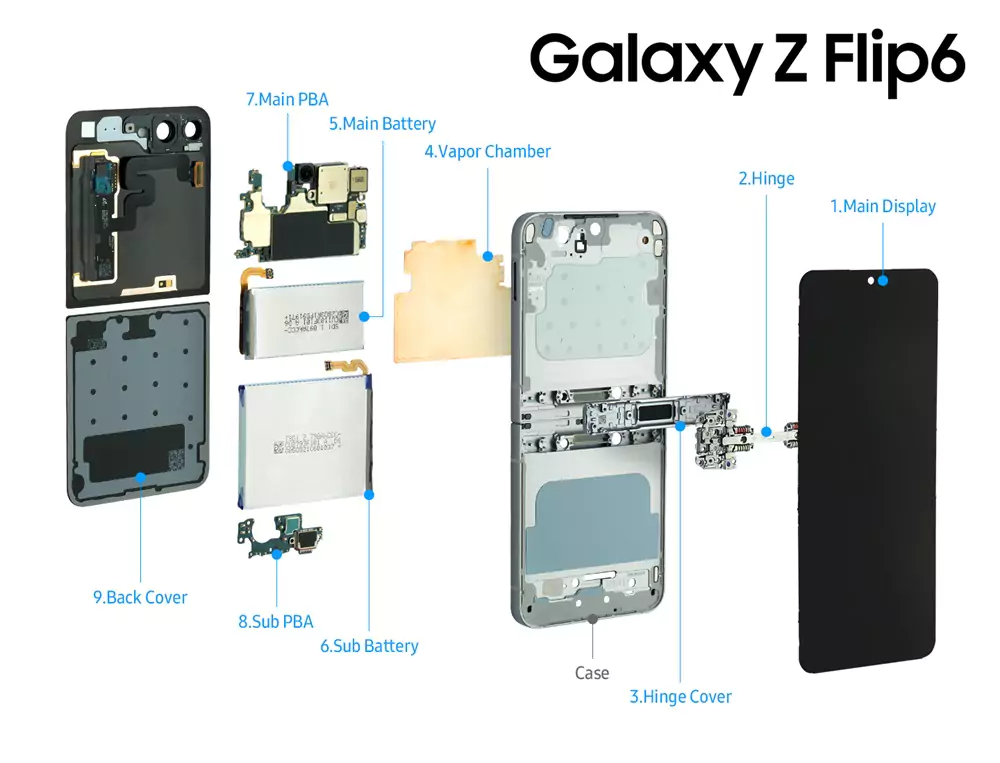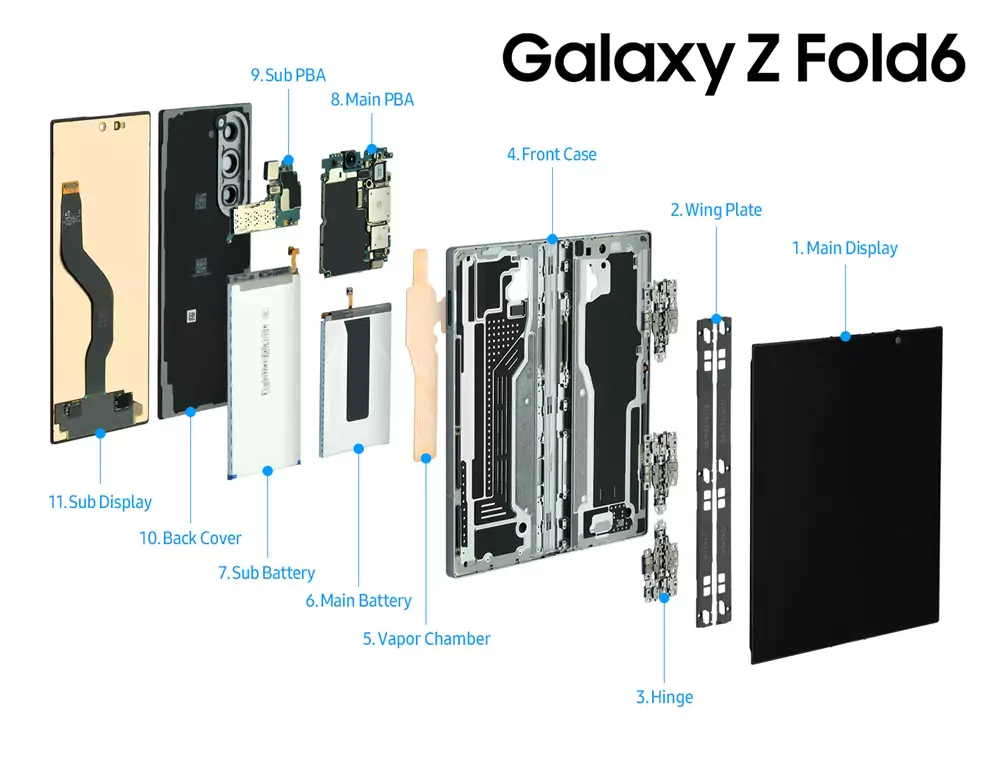This week, Qualcomm debuted the premium Snapdragon 8 Gen 2 processor. Some of the smartphone makers whose products will have the new chip in the coming weeks were named by the company. In this post, we provide you with a list of the most significant smartphones that will start shipping next month with this potent processor.
Snapdragon 8 GEN 2
The Snapdragon 8 Gen 2 chipset performs better than the Gen 1 version, and because the first Gen 2 devices are likely to be released, we will soon be able to enjoy this performance.
The SM8550-AB, the chip’s formal name, was created using a 4nm manufacturing technique. The new processor still delivers observable performance advantages even though Qualcomm focused on improving power efficiency. The three new Kryo CPUs provide up to 35% higher performance and up to 40% more efficiency.
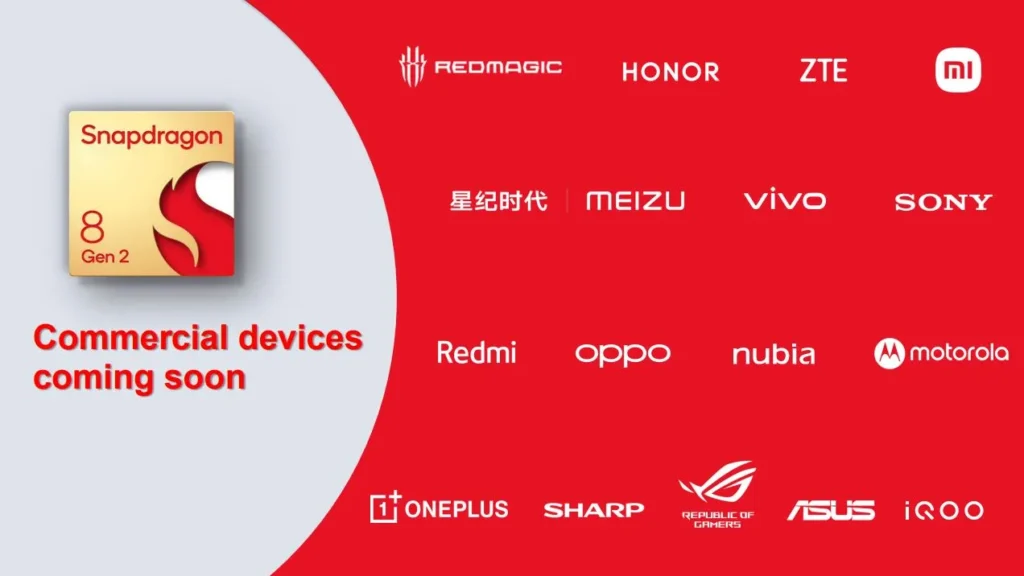
The clock speeds are the same as the Snapdragon 8+ Gen 1, but the core configuration is different. The single Kryo Prime core, which runs at 3.2GHz and is based on Cortex-X3, offers high single-threaded performance (3.1872GHz to be exact). To better manage multi-threaded tasks, it is backed this time by four Performance cores (instead of three) that run at 2.8GHz. Finally, there are only three 2.0GHz Efficiency cores (instead of four).
The latest current Adreno GPU promises up to 25% greater performance and up to 45% more power efficiency. Ray tracing which has been hardware-accelerated is now supported by the Snapdragon platform. Ray tracing hardware is currently available from the major Android chipset suppliers, thus it’s feasible that mobile game developers may adopt the new technique as they did. for games on PCs and consoles.
The Snapdragon 8 Gen 2 can handle on-device screens with QHD+ resolution at up to 144Hz and those with 4K resolution at up to 60Hz. Additionally, it supports HDR10+, Dolby Vision, and the 10-bit Rec. 2020 colour gamut in addition to external monitors that are up to 4K at 60Hz.
Upcoming devices powered on the Snapdragon 8 Gen 2
Samsung Galaxy S23, S23+, and S23 Ultra
One of the incoming smartphones featuring the most recent Snapdragon 8 Gen 2 processor that has already been tested on Geekbench is the Galaxy S23, S23+, and S23 Ultra. When the benchmark was finished, the three clusters reported the following frequencies: 3.36GHz prime, 2.80GHz performance, and 2.02GHz efficiency cores are available.
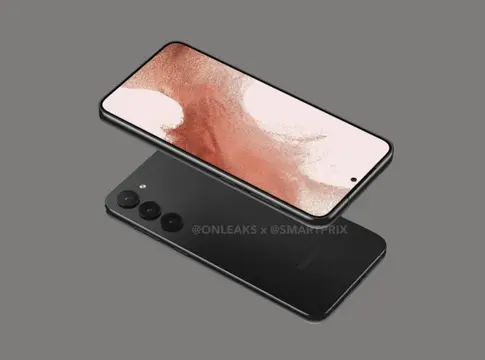
But in addition to the Samsung flagships, a lot of other phones in the future will also employ the 8 Gen 2 CPU. Additionally, some of them, like the Vivo X90 Pro and iQOO 11, have included benchmarks. But pay special attention, 3.19GHz is the advertised frequency for the Prime core on those. Qualcomm gave the precise figure of 3.1872GHz. So why do Samsung phones have quicker clock rates?
The Snapdragon 8 Gen 2 would include a “unique high-frequency variant” for the European market, according to a prior statement by Ice Universe. Despite the fact that the benchmarks we’ve seen so far are from US models, this is probably a worldwide problem rather than one that simply impacts Europe.
The leaker now adds further details, revealing that the Prime CPU core will really operate at 3.36GHz as opposed to 3.2GHz. However, the GPU will also run at a quicker pace (719 MHz as opposed to 680 MHz).
Qualcomm occasionally introduces “high-frequency” variants with overclock rates than the basic CPU. For example, the Snapdragon 855 is designated by the model number SM8150, while the 855+, which boosts the Prime core’s speed to 2.96GHz, is designated by the model number SM8150-AC. Since the 8 Gen 2 that was introduced this week is the SM8550-AB, this must be the SM8550-AC.
The Snapdragon 8+ Gen 2 designation may or may not be applicable to this chipset, which will power the Galaxy S23 line of smartphones. But it seems as though Qualcomm and TSMC were able to find enough room for a reasonable overclock.
The GPU is 25% faster and the 8 Gen 2 CPU is 35% faster than its 8 Gen 1 cousin, according to official Qualcomm numbers. The speed of this new chip version will be much faster. However, because benchmark results should not be interpreted just yet, it is challenging to say how much quicker.
Xiaomi 13 series
The new flagship Xiaomi series was supposed to be presented at the end of November, but more recent sources have suggested that the event would take place on December 1. This series will include the latest Qualcomm processor, which will be paired with up to 12 GB of RAM to deliver genuinely high performance.
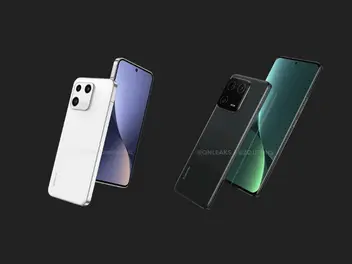
The Xiaomi 13 Pro, the most sophisticated model, will command the greatest interest. With a 50-megapixel Sony IMX989 main sensor, a 50-megapixel ultra wide-angle sensor, and a 50-megapixel telephoto sensor, it will have a triple camera configuration.
This device will also come with a 6.7-inch screen with 2K resolution and a customizable refresh rate between 1 and 120 Hz. One of its advantages is the 4,800 mAh battery, which offers quick charging at 120 watts.
Oppo Find X6
Additionally, Oppo has said that the Snapdragon 8 Gen 2 chipset would be used in its forthcoming flagship series. It seems that the Find X6 Pro’s model will house this chip.
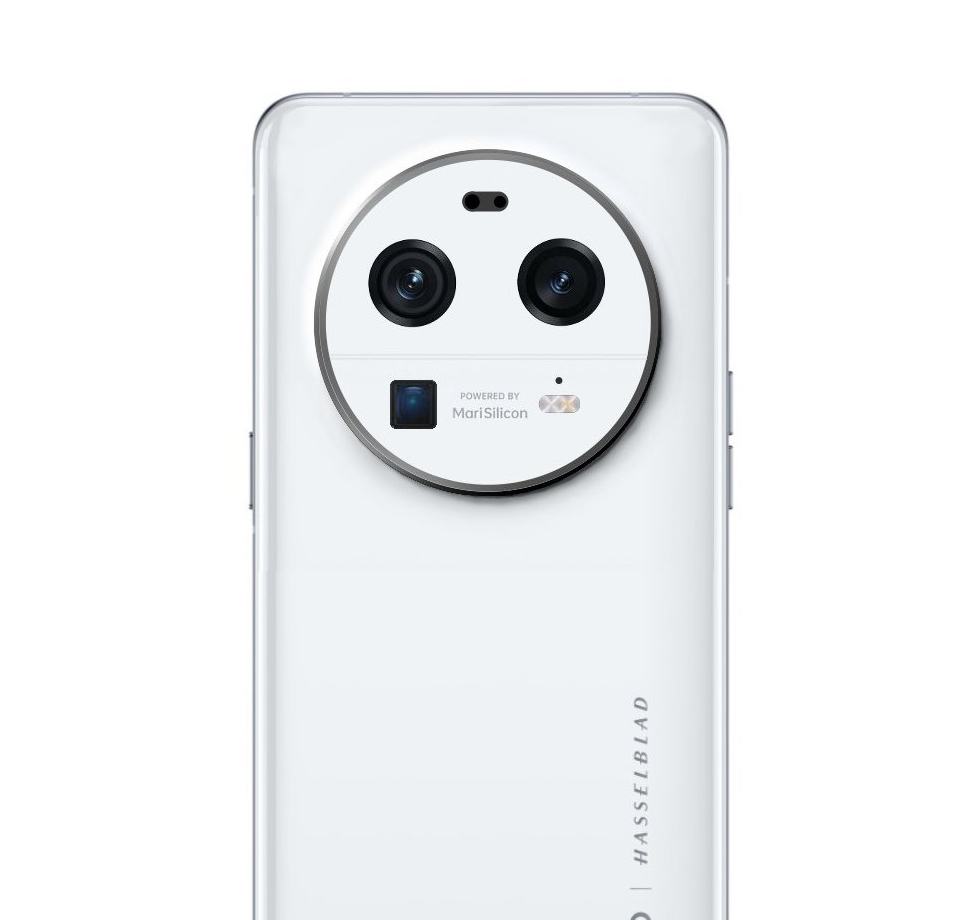
This cutting-edge model’s triple rear camera array will have a Sony IMX989 sensor with an inch size and 50 megapixels of resolution, making it one of the smartphones on the market, as is previously known about it.
There will also be two extra 50-megapixel sensors. Rumours also suggest that it will include an AMOLED panel with a 2K resolution and 120 Hz refresh rate.
Oneplus 11
The coming OnePlus 11 will be powered by Qualcomm’s recently unveiled Snapdragon 8 Gen 2 processor. a statement from the company itself posted publicly on the Chinese social media platform Weibo verifying the details.
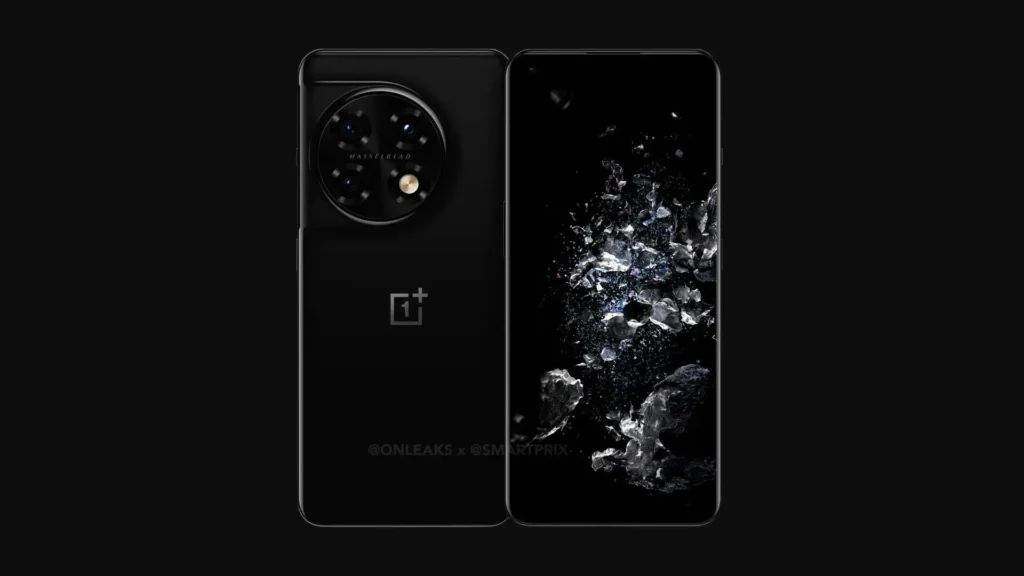
It will also come with up to 16 GB of RAM and 256 GB of internal storage. A 6.7-inch AMOLED panel will serve as the screen. has a fingerprint reader built-in and a 120 Hz refresh rate.
A 50-megapixel main sensor, a 48-megapixel ultra-wide-angle sensor, and even a 32-megapixel telephoto sensor with 2x optical zoom will be included in the OnePlus 11’s three cameras, which are comparable to those on the Xiaomi 13 Pro. The OnePlus variant will ship with a substantial 5,000 mAh battery that supports 100 watts of quick charging.
Moto X40
Motorola’s Snapdragon 8 Gen 2 model will also be unveiled. It may be found inside the Moto X40 and has a maximum of 512 GB of storage and up to 16 GB of RAM.
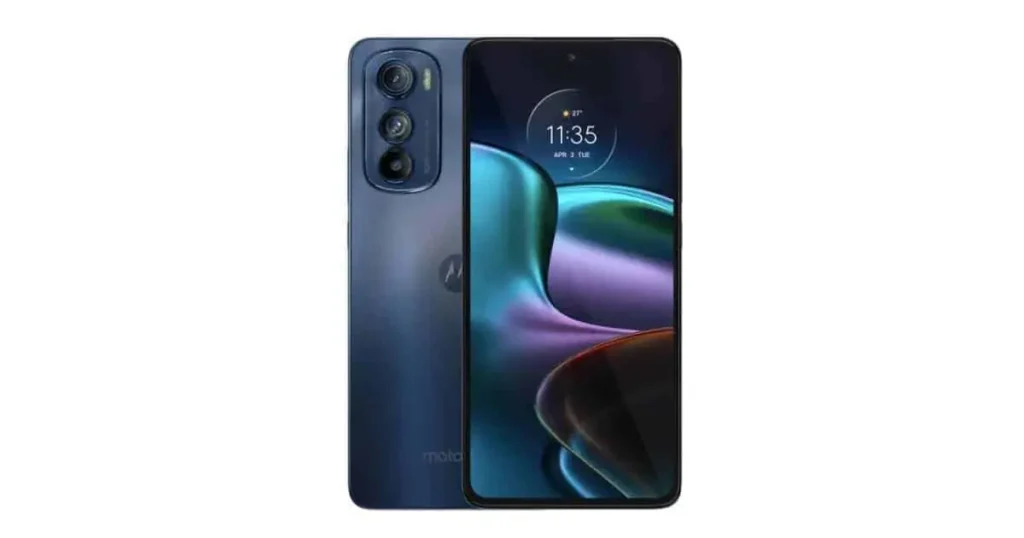
Unknown at this time is the resolution of the 6.67-inch display, which has a high refresh rate of 144 Hz. It runs Android 13 and has a 5,000 mAh battery with 68-watt quick charging.
To capture the greatest moments, it will include a 50-megapixel main sensor, a 50-megapixel wide-angle sensor, and even a 12-megapixel telephoto sensor.
Vivo X90 Pro
On November 22, Vivo will officially launch its new X90 series. The MediaTek Dimensity 9200 processor will be mostly in charge of the base model. The Qualcomm Snapdragon 8 Gen 2 chip will power the X90 Pro+ variant.

The Sony IMX989 will be the X90 Pro+’s main sensor in terms of optics. Additionally, 48-megapixel super wide-angle, 50-megapixel depth and even 64-megapixel telephoto sensors will be present alongside it.
The front of the gadget will have a 6.78-inch screen with a 2K resolution and a refresh rate of 120 Hz. It will allow rapid charging at 80 watts and have a 4,700 mAh battery.
IQOO 11
Additionally releasing a flagship model with the latest Snapdragon 8 Gen 2 is the Vivo subsidiary iQOO 11. It will also come with up to 16 GB of LPDDR5 RAM memory. and internal UFS 3.1 storage with a maximum capacity of 256 GB.
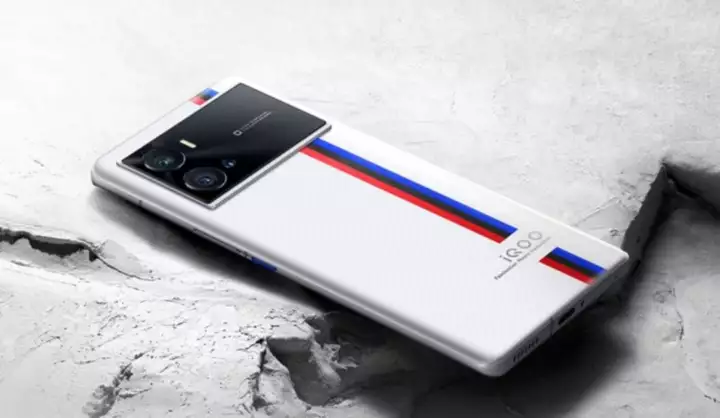
On the other hand, the 6.78-inch AMOLED screen provides Full HD+ clarity and a quick 144 Hz refresh rate. Even the OriginOS 3 with the Android 13 operating system is obtainable. There will also be a 5,000 mAh battery with 120 watts of support for quick charging.
The optical component will have less costly specifications. The triple camera setup will have a 50-megapixel main sensor, a 13-megapixel ultrawide sensor, and a 12-megapixel telephoto sensor.
To get real-time news alerts join the TechnewsroomsTelegram group. You can also follow us on Twitter and subscribe to our GoogleNews feed for updates.
